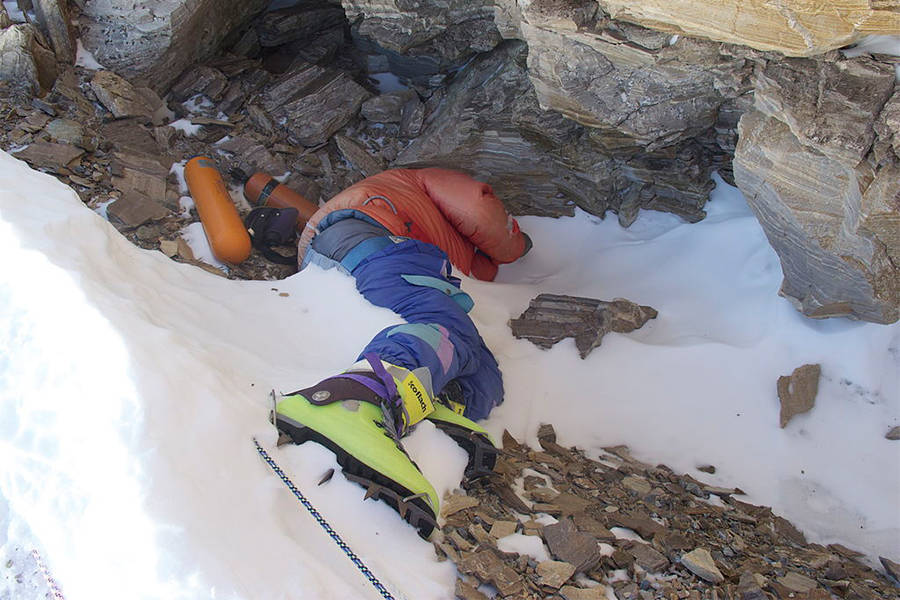What kills people on Everest?

What kills most climbers on Everest
Of all deaths from 1950 to 2019 in non-Sherpa climbers during a summit bid on Mount Everest, about 35% were caused by falls, with other leading causes being exhaustion (22%), altitude illness (18%) and exposure (13%). In Sherpa deaths over the same time period, 44% were attributable to avalanches.
Cached
What is the main cause of death on Mount Everest
The most common causes of death on Mount Everest are acute mountain sickness, falls, avalanches, exhaustion, crevasses, exposure, and hypothermia.
Cached
Where do most Everest deaths occur
Most of the deaths on Everest have occurred in the "death zone," which is above 8,000 meters (26,247 feet) in elevation. At this altitude, the air is thin, and oxygen levels are dangerously low, making it extremely difficult for climbers to breathe and remain conscious.
Why are so many bodies left on Everest
However, the reasons for leaving the bodies behind are purely logical. The dangers of Everest make retrieving a body extremely difficult – sometimes impossible – and expensive. Bodies resting above Camp 2 21,000ft cannot be retrieved by helicopter. Instead, the bodies need to be carried down the mountain for retrieval.
Cached
What is the deadliest part of Everest
Even with the extensive systems of ropes and ladders installed each climbing season by the ice doctors, the Khumbu Icefall is the most dangerous part of an Everest expedition.
Is Sleeping Beauty still on Everest
Francys Arsentiev is known as The Sleeping beauty of Everest. She died on Mount Everest on May 24, 1998, when she descended from the top of the tallest mountain after setting the record of the first American female to climb Everest without oxygen. Francys was an American native, born and raised in Hawaii, Honolulu.
What are the top 2 reasons for death on Mt. Everest
These are mountain sickness, exhaustion, frostbite, falls, avalanches, rockfalls, and cracks.
How long can you stay in the death zone on Everest
16 to 20 hours
People are advised not to stay in the death zone for more than 16 to 20 hours. Here are a few things to know about the Everest Death Zone: More than 200 climbers have died on Mount Everest since Tenzing Norgay and Edmund Hillary's first official ascent in 1953. Most of them lost their lives in the death zone.
What was the deadliest year on Everest
1996
1996 Mount Everest disaster
| The summit of Mount Everest | |
|---|---|
| Date | 10 May 1996 – 11 May 1996 |
| Coordinates | 27°59′17″N 86°55′30″E |
| Organised by | Adventure Consultants Mountain Madness Indo-Tibetan Border Police |
| Deaths | 8 |
How many corpses are on Mount Everest
There are thought to be over 200 bodies left on Mount Everest. No one is entirely sure how many or exactly where many are because of the horrific and unrelenting conditions. That means two-thirds of the people that died on Everest are still there. Why Do People Climb Everest
What famous body was found on Everest
On 1 May 1999, at a height of 8200 meters (almost 27,000 feet), George Mallory's body was located on the north slope of Mount Everest at the foot of the Northeast Ridge, Northface in Tibet, well preserved and frozen solid.
Are there visible bodies on Everest
Can You See Dead Bodies On Everest There are quite a few dead bodies in various places along the normal Everest routes. Some have been there for years, some appear only after weather changes and snow deposits moves. Some bodies may only be days old.
What happens to human body in Everest death zone
In the death zone, climbers' brains and lungs are starved for oxygen, their risk of heart attack and stroke is increased, and their judgment quickly becomes impaired. "Your body is breaking down and essentially dying," Shaunna Burke, a climber who summited Everest in 2005, told Insider in 2022.
What is the chance of dying on Mount Everest
That works out at roughly one death for every five successful ascents to the summit. K2, which is part of the neighbouring Karakoram mountain range, is even more dangerous – there have been 355 successful ascents to the summit and 82 deaths.
What was the deadliest day on Everest
On May 10, 1996, 12 climbers who had scaled the mountain were caught in a blizzard as they began their descent from the peak.
How cold is on top of Everest
The weather and climate of Mount Everest is one of extremes. Temperatures at the summit are never above freezing and during January temperatures can drop as low as -60° C (-76° F). Despite the low temperatures the biggest issue faced by climbers are hurricane force winds and wind chill.
Why are dead bodies not removed from Everest
Many climbers and guides think the bodies should be left there out of respect for the dead climbers' love for mountains and in view of cost. “Many bodies are there because the family members did not want to take [them],” says Kami Rita Sherpa, a guide who has summited Everest a record 24 times.
What happens if you collapse on Everest
In the death zone, climbers' brains and lungs are starved for oxygen, their risk of heart attack and stroke is increased, and their judgment quickly becomes impaired. "Your body is breaking down and essentially dying," Shaunna Burke, a climber who summited Everest in 2005, told Insider in 2022.
Has anyone survived a night on Everest
The climbing boots worn by Lincoln Hall when he was left for dead on Mount Everest have gone on display at the National Museum of Australia (NMA). The pioneering Australian mountaineer survived a night alone at 8,600 metres after suffering altitude sickness on the trek down from the summit in May 2006.
What was the worst disaster on Everest
The Worst Disasters on Mount EverestTerror on the West Ridge.Hubris While Pushing the North Col.Tragedy of the Unknown.The Sharp Divide.A Deadly Season.The 2014 Serac Collapse.Earthquake on the Mountain.Darkest Day. It started with missing fixed ropes.
What is the two o’clock rule on Everest
During the weeks of preparation for their trek, commercial team leaders Rob Hall and Scott Fischer repeatedly told their clients about the “two o'clock rule.” On the day they would attempt to reach the summit, they would have to do so by 2 pm; otherwise they'd have to turn around even if they were within sight of the …
Can bodies decompose on Everest
Do bodies decompose on Everest No, they do not decompose. In less than four hours after passing away, most bodies freeze to the slope. Due to the temperature, these corpses remain frozen 365 days a year.
What is the biggest tragedy of Mount Everest
The Worst Disasters on Mount EverestTerror on the West Ridge.Hubris While Pushing the North Col.Tragedy of the Unknown.The Sharp Divide.A Deadly Season.The 2014 Serac Collapse.Earthquake on the Mountain.Darkest Day. It started with missing fixed ropes.
How long can you stay in Everest death zone
16 to 20 hours
People are advised not to stay in the death zone for more than 16 to 20 hours. Here are a few things to know about the Everest Death Zone: More than 200 climbers have died on Mount Everest since Tenzing Norgay and Edmund Hillary's first official ascent in 1953. Most of them lost their lives in the death zone.
What happens if you don’t acclimate on Everest
Altitude sickness is the general term for what happens when you aren't acclimatized. Symptoms can range from a mild headache to incapacitation and death. Altitude sickness comes in three forms: Acute Mountain Sickness (AMS), High-Altitude Pulmonary Edema (HAPE), and High-Altitude Cerebral Edema (HACE).



0 Comments